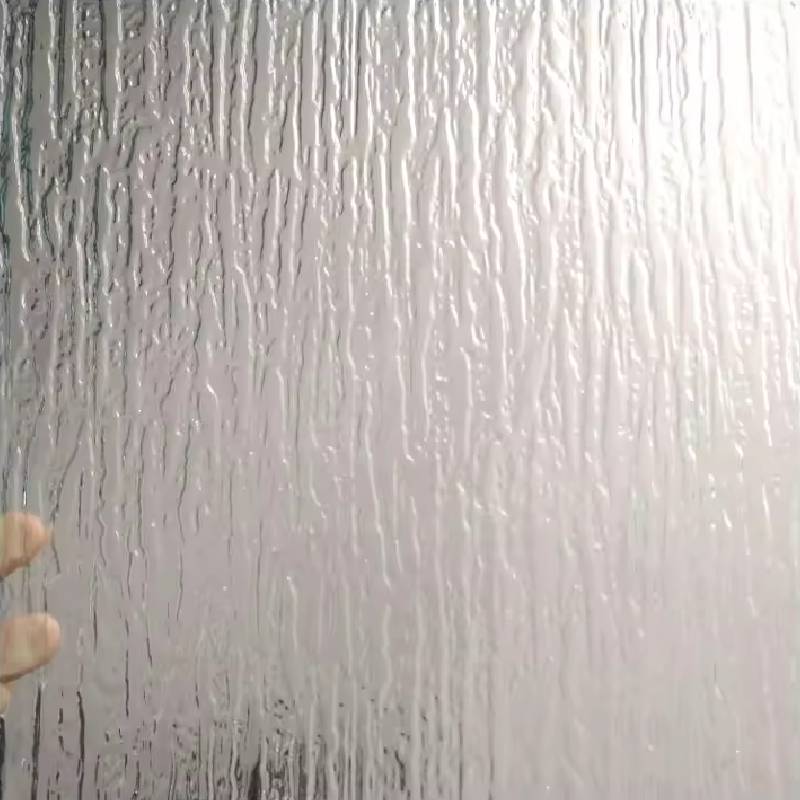The Art and Craft of Colored Tempered Glass Manufacturing
Colored tempered glass is a remarkable material that combines aesthetics with functionality, making it a popular choice in various architectural and design applications. The process of manufacturing this innovative product involves meticulous techniques that ensure both durability and visual appeal. As a result, colored tempered glass has made a significant impact in the fields of construction, interior design, and even automotive industries.
Understanding Tempered Glass
Tempered glass, also known as toughened glass, is produced through a special process that involves heating the glass to extremely high temperatures and then rapidly cooling it. This treatment makes the glass much stronger than ordinary glass, capable of withstanding high levels of stress and thermal fluctuations. In fact, tempered glass is approximately four to five times stronger than standard glass of the same thickness. When it shatters, it breaks into small, blunt pieces rather than sharp shards, ensuring higher safety levels.
The Process of Coloring
The unique feature of colored tempered glass lies in its vibrant hues. The coloring process can be achieved in several ways, one of which involves adding metal oxides during the glass-making procedure. For example, incorporating cobalt oxide can produce shades of blue, while iron oxide can create green tones. These colorants are mixed into the molten glass prior to cooling, resulting in an even distribution of color throughout the glass.
Another method involves applying a colored film or coating to the surface of the tempered glass after it has been produced. However, this method generally does not provide the same durability and permanence as the integrated approach. High-quality colored tempered glass manufacturers prioritize the incorporation of color during the melting process, ensuring that the colors remain vibrant throughout the product's lifespan.
colored tempered glass manufacturer
Applications and Benefits
The applications of colored tempered glass are diverse and far-reaching. In architecture, it is often used for facades, windows, and partitions, providing not only visual interest but also energy efficiency through solar control. The ability to reduce heat and glare while allowing natural light to filter through makes colored tempered glass an excellent choice for sustainable design.
In interior design, colored tempered glass is popular for its aesthetic versatility. It is commonly used in shower enclosures, tabletops, cabinet doors, and decorative panels. The ability to customize colors and patterns allows designers to create striking visual statements that can enhance any space.
Moreover, the durability of colored tempered glass makes it suitable for high-traffic areas, where safety and reliability are paramount. From retail spaces to public buildings, this material can withstand the test of time, reducing the need for frequent replacements.
Conclusion
As the demand for innovative and sustainable building materials continues to rise, colored tempered glass stands out as a prime example of how art meets engineering. Its manufacturing process, combining strength and beauty, showcases the skilled craftsmanship of colored tempered glass manufacturers. These professionals not only produce a product that meets safety and durability standards but also enriches environments with vibrant and customizable designs. The future of colored tempered glass looks bright, with endless possibilities for creativity in architecture and design, ensuring its continued popularity in years to come.
 Afrikaans
Afrikaans  Albanian
Albanian  Amharic
Amharic  Arabic
Arabic  Armenian
Armenian  Azerbaijani
Azerbaijani  Basque
Basque  Belarusian
Belarusian  Bengali
Bengali  Bosnian
Bosnian  Bulgarian
Bulgarian  Catalan
Catalan  Cebuano
Cebuano  Corsican
Corsican  Croatian
Croatian  Czech
Czech  Danish
Danish  Dutch
Dutch  English
English  Esperanto
Esperanto  Estonian
Estonian  Finnish
Finnish  French
French  Frisian
Frisian  Galician
Galician  Georgian
Georgian  German
German  Greek
Greek  Gujarati
Gujarati  Haitian Creole
Haitian Creole  hausa
hausa  hawaiian
hawaiian  Hebrew
Hebrew  Hindi
Hindi  Miao
Miao  Hungarian
Hungarian  Icelandic
Icelandic  igbo
igbo  Indonesian
Indonesian  irish
irish  Italian
Italian  Japanese
Japanese  Javanese
Javanese  Kannada
Kannada  kazakh
kazakh  Khmer
Khmer  Rwandese
Rwandese  Korean
Korean  Kurdish
Kurdish  Kyrgyz
Kyrgyz  Lao
Lao  Latin
Latin  Latvian
Latvian  Lithuanian
Lithuanian  Luxembourgish
Luxembourgish  Macedonian
Macedonian  Malgashi
Malgashi  Malay
Malay  Malayalam
Malayalam  Maltese
Maltese  Maori
Maori  Marathi
Marathi  Mongolian
Mongolian  Myanmar
Myanmar  Nepali
Nepali  Norwegian
Norwegian  Norwegian
Norwegian  Occitan
Occitan  Pashto
Pashto  Persian
Persian  Polish
Polish  Portuguese
Portuguese  Punjabi
Punjabi  Romanian
Romanian  Russian
Russian  Samoan
Samoan  Scottish Gaelic
Scottish Gaelic  Serbian
Serbian  Sesotho
Sesotho  Shona
Shona  Sindhi
Sindhi  Sinhala
Sinhala  Slovak
Slovak  Slovenian
Slovenian  Somali
Somali  Spanish
Spanish  Sundanese
Sundanese  Swahili
Swahili  Swedish
Swedish  Tagalog
Tagalog  Tajik
Tajik  Tamil
Tamil  Tatar
Tatar  Telugu
Telugu  Thai
Thai  Turkish
Turkish  Turkmen
Turkmen  Ukrainian
Ukrainian  Urdu
Urdu  Uighur
Uighur  Uzbek
Uzbek  Vietnamese
Vietnamese  Welsh
Welsh  Bantu
Bantu  Yiddish
Yiddish  Yoruba
Yoruba  Zulu
Zulu 

